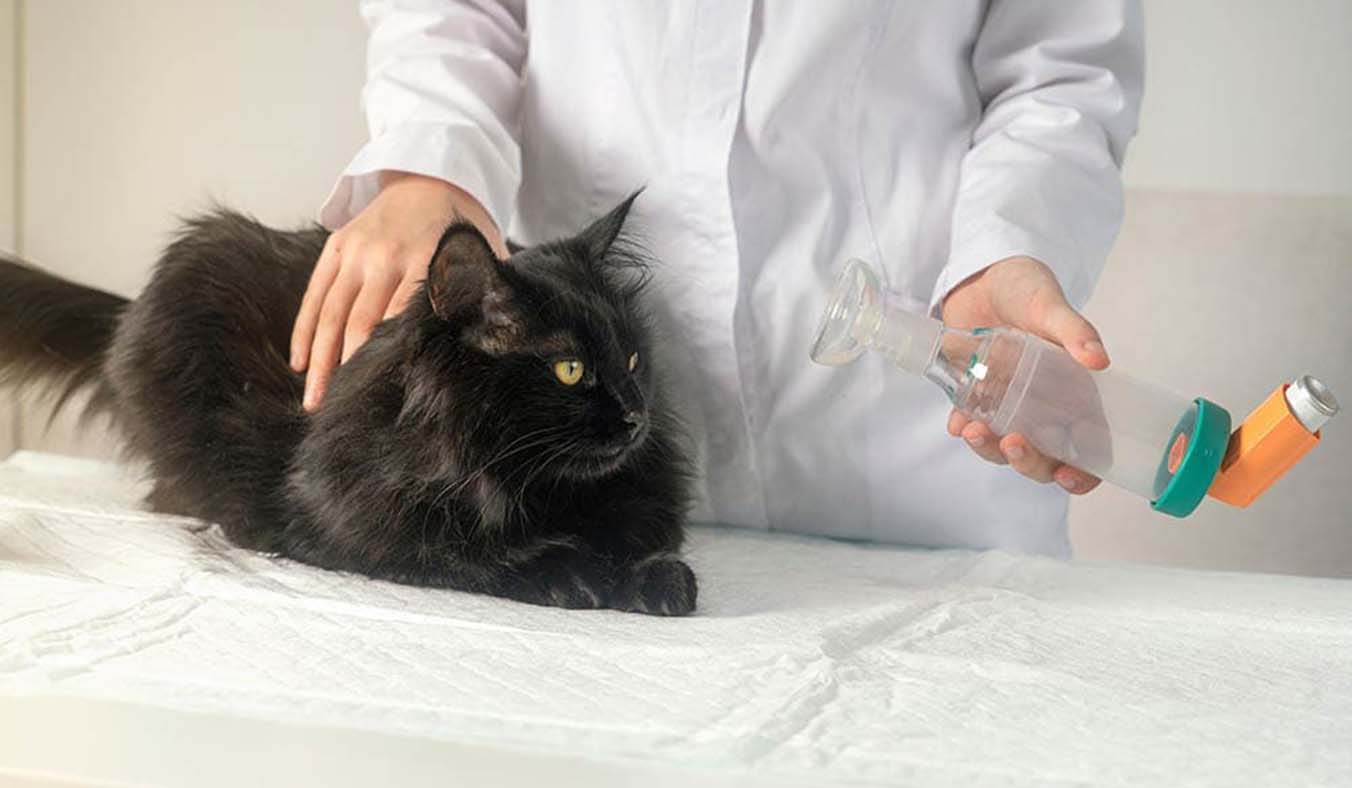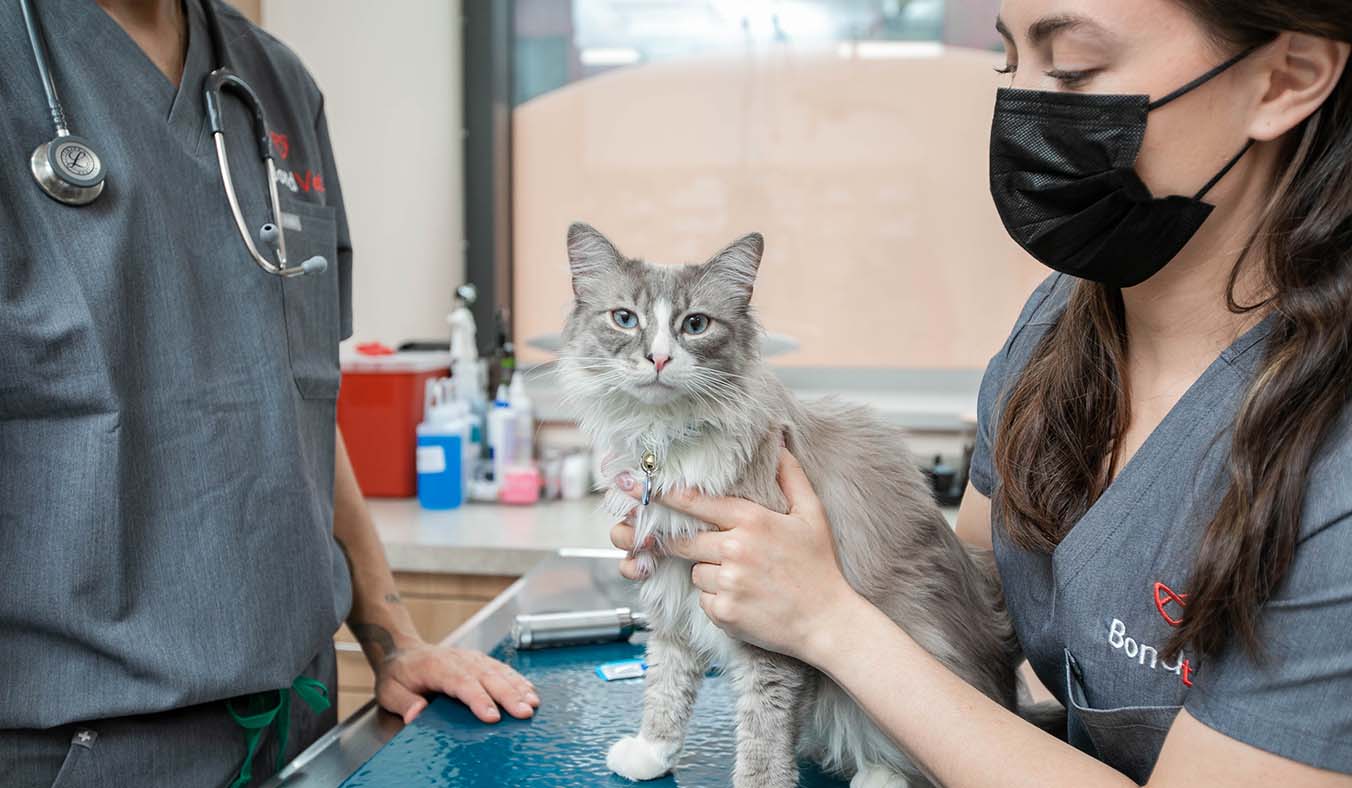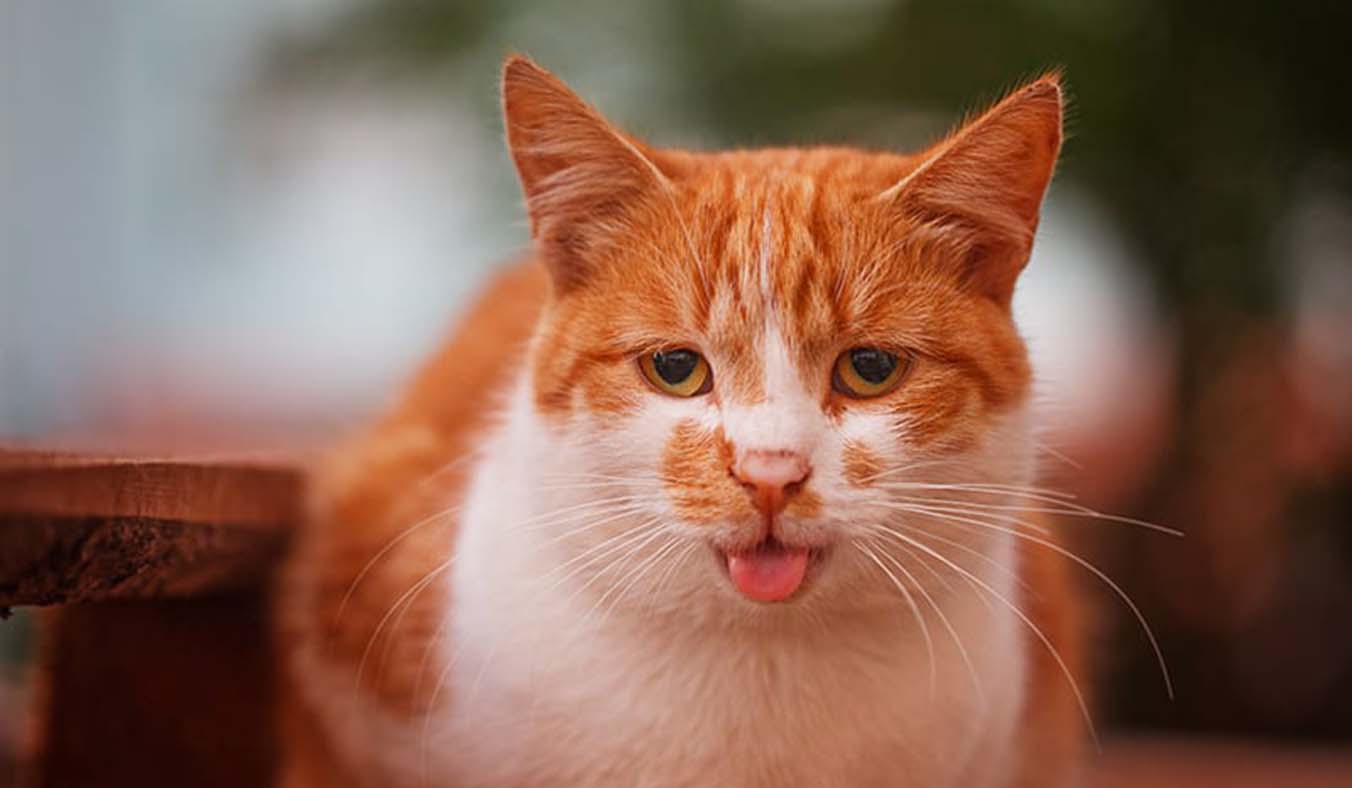Feline asthma, though relatively common, can be a concerning respiratory condition for cat owners. Understanding its causes, recognizing symptoms, and exploring treatment options are pivotal in ensuring the well-being of our feline companions. We delve into the intricacies of feline asthma, shedding light on its complexities and offering insights into effective management strategies.
Exploring the Origins of Feline Asthma
Feline asthma, referred to as allergic bronchitis or allergic airway disease, manifests as inflammation and narrowing of the air passages in cats. Though its precise origins remain enigmatic, a plethora of factors are thought to underlie its onset. Let’s delve into the intricacies of what might trigger this respiratory condition:
- Environmental Allergens: Common environmental allergens like pollen, dust mites, mold spores, and cigarette smoke infiltrate the airways, provoking irritation and inflammation in susceptible cats. Exposure to these allergens can exacerbate asthma symptoms, leading to respiratory distress.
- Genetic Predisposition: Certain feline breeds exhibit a predisposition to respiratory conditions, including asthma. Breeds such as Siamese, Himalayan, and Burmese cats are believed to have a higher susceptibility, hinting at potential genetic factors influencing the development of asthma.
- Viral Infections: Viral respiratory infections, notably feline herpesvirus and feline calicivirus, can compromise respiratory function and exacerbate airway inflammation in cats. Cats with a history of recurrent respiratory infections may be more prone to developing asthma due to compromised lung health.
- Stress and Anxiety: Psychological stress and anxiety can exacerbate asthma symptoms in cats. Environmental stressors, changes in routine, or conflicts with other pets can trigger respiratory distress and worsen asthma attacks.
- Indoor Air Quality: Poor indoor air quality, characterized by dust, pollutants, and indoor allergens, can aggravate asthma symptoms in cats. Dusty litter, inadequate ventilation, and exposure to household chemicals or cleaning products may contribute to respiratory inflammation and trigger asthma episodes.
By comprehensively understanding the multifaceted nature of feline asthma triggers, cat owners can take proactive measures to minimize exposure to allergens, promote respiratory health, and create a conducive environment for their feline companions.
Spotting Signs of Feline Asthma
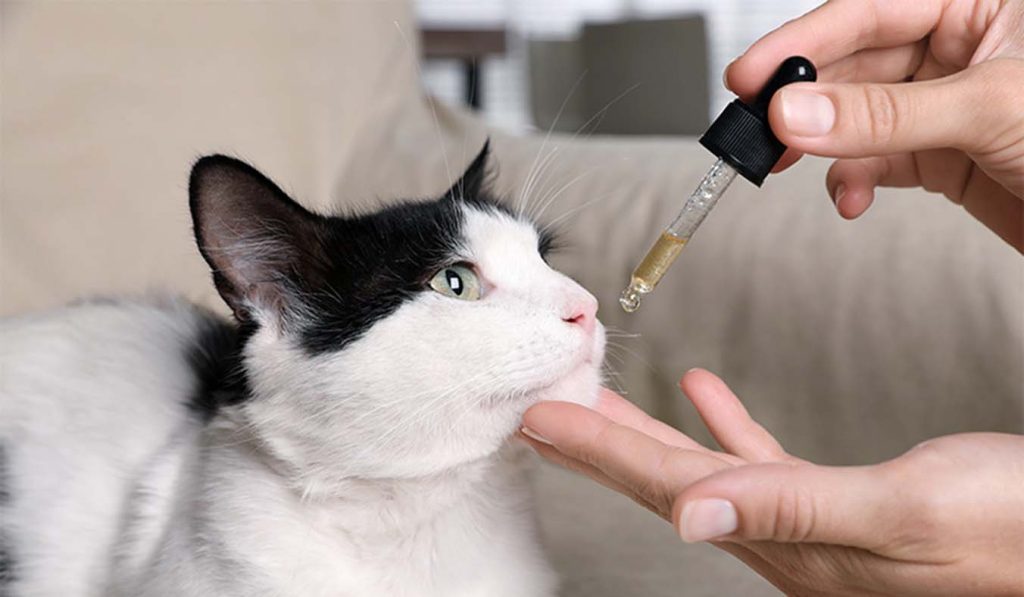
Identifying the subtle cues of feline asthma is pivotal for timely intervention and optimal care. Here’s a detailed exploration of the symptoms to watch for:
- Persistent Coughing: Keep an ear out for frequent or persistent coughing spells, often accompanied by wheezing or hacking sounds, indicating airway inflammation and irritation characteristic of asthma.
- Labored Breathing: Watch for signs of labored breathing, such as rapid or shallow breaths, noticeable chest movements, or increased effort to inhale and exhale. Cats may adopt a hunched posture or exhibit open-mouthed breathing in severe cases.
- Audible Wheezing: Listen attentively for wheezing or whistling sounds emanating from your cat’s chest during breathing, suggestive of narrowed airways and compromised respiratory function.
- Lethargy and Weakness: Note any changes in your cat’s activity level or demeanor. Asthmatic cats may appear lethargic, subdued, or less willing to engage in usual play or exploration due to respiratory discomfort.
- Appetite Changes: Monitor your cat’s eating habits closely. Asthma-related respiratory distress can dampen appetite, leading to decreased food intake or outright refusal to eat. Keep an eye out for any sudden shifts in appetite patterns.
By remaining vigilant and attuned to these telltale signs, cat owners can promptly seek veterinary care and implement appropriate management strategies to alleviate their feline companion’s respiratory distress and enhance their quality of life.
Navigating the Treatment Landscape for Feline Asthma
Managing feline asthma requires a comprehensive approach tailored to each cat’s unique needs and the severity of their condition. Here’s a detailed overview of the various treatment options commonly employed by veterinarians:
- Bronchodilators: Inhalers containing bronchodilators, such as albuterol or terbutaline, help expand the airways, making breathing easier during asthma attacks. These medications provide rapid relief from acute symptoms and are often administered through a spacer device or inhaler mask.
- Corticosteroids: Oral or inhaled corticosteroids are potent anti-inflammatory agents used to reduce airway inflammation and suppress immune responses associated with asthma. These medications help manage chronic inflammation and prevent asthma exacerbations when administered as part of a long-term treatment regimen.
- Environmental Control: Minimizing exposure to environmental triggers, including dust, smoke, pollen, and other allergens, is crucial for preventing asthma flare-ups. Cat owners can implement measures such as regular vacuuming, air filtration systems, and smoking cessation to improve indoor air quality and reduce asthma triggers.
- Stress Management: Stress and anxiety can exacerbate asthma symptoms in cats. Creating a calm and stable environment, providing enriching activities, and minimizing disruptions can help reduce stress levels and mitigate the risk of asthma attacks.
- Regular Monitoring and Adjustments: Veterinary oversight is essential for monitoring the cat’s response to treatment, evaluating respiratory function, and making necessary adjustments to the treatment plan. Regular check-ups enable veterinarians to assess treatment efficacy, address emerging concerns, and optimize asthma management strategies for long-term health and well-being.
By adopting a multifaceted approach encompassing medication management, environmental modifications, and stress reduction techniques, cat owners can effectively manage feline asthma and improve their feline companion’s quality of life. Collaboration with a veterinarian is paramount for developing an individualized treatment plan that addresses the unique needs and challenges associated with this respiratory condition.
Shielding Your Feline Companion from Asthma Flare-ups
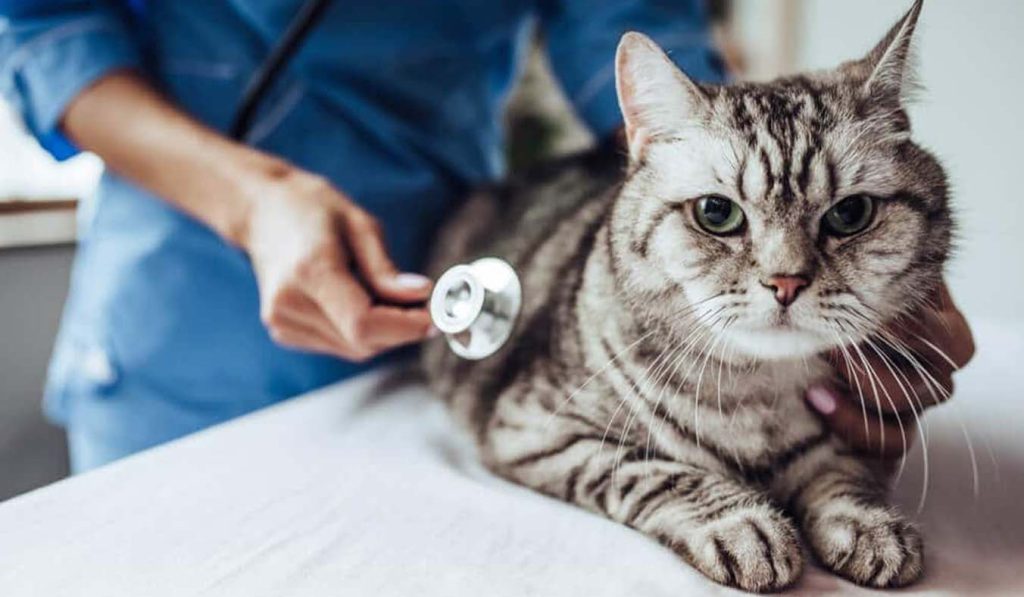
While complete prevention of feline asthma may be elusive, proactive measures can significantly reduce the likelihood of asthma attacks in susceptible cats. Here’s a comprehensive guide to safeguarding your feline friend’s respiratory health:
- Mitigate Environmental Triggers: Create a sanctuary free from airborne irritants by regularly cleaning the cat’s living space. Invest in high-quality air purifiers, use hypoallergenic bedding, and vacuum frequently to minimize dust, pollen, and other allergens that can trigger asthma episodes.
- Breathe Easy: Say No to Smoking: Commit to a smoke-free environment for your cat’s well-being. Secondhand smoke poses serious respiratory risks, exacerbating asthma symptoms and increasing the likelihood of flare-ups. Protect your feline friend’s delicate lungs by banning smoking indoors and minimizing exposure to outdoor smoke.
- Soothe Stressors: Cats are sensitive creatures, and stress can exacerbate asthma symptoms. Create a calm, tranquil environment enriched with stimulating toys, cozy hiding spots, and comforting routines. Minimize disruptions and provide plenty of opportunities for mental and physical stimulation to keep stress at bay.
- Weight Wellness: Maintain your cat’s optimal weight through a balanced diet and regular exercise. Obesity can strain the respiratory system, worsening asthma symptoms. Consult with your veterinarian to develop a tailored nutrition and exercise plan that supports your cat’s overall health and vitality.
- Partner with Your Veterinarian: Stay vigilant and proactive in managing your cat’s asthma. Adhere to your veterinarian’s treatment plan, including medication schedules, regular check-ups, and monitoring respiratory function. Open communication with your veterinary team ensures timely adjustments to the treatment regimen and empowers you to provide the best possible care for your cherished companion.
By implementing these preventive strategies and fostering a supportive environment, you can empower your feline friend to thrive despite the challenges of feline asthma, promoting a life filled with vitality, comfort, and well-being.
Feline asthma presents unique challenges for cat owners, but with proactive management and veterinary guidance, affected cats can lead fulfilling lives free from respiratory distress. By understanding the causes, recognizing symptoms, and implementing effective treatment and prevention strategies, we empower ourselves to be vigilant stewards of our feline companions’ respiratory health. Together, we navigate the path forward, championing the well-being and vitality of our cherished cats in the face of respiratory adversity.
